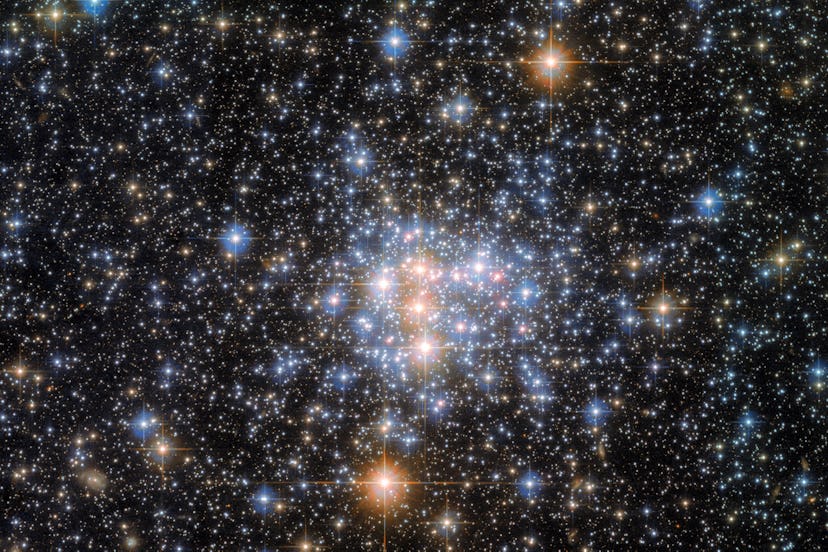NASA's Glittering Hubble Photo Of A Dwarf Galaxy Is A Beautiful Sight
Another week, another stunning space image to share with the kids!

Aspiring cosmonauts just got treated to another stunning image released by NASA in collaboration with the ESA (European Space Agency). The latest image was taken not from the James Webb Space Telescope, but from the Hubble Space Telescope, and not only is it stunning, glitzy, and beautiful, but it’s a look into a dwarf galaxy that could provide researchers with a lot of information about stars.
NASA released an image showing a small portion of a dwarf galaxy known as the Small Magellanic Cloud (SMC). This galaxy is one of the closest neighbors to our galaxy, the Milky Way; according to NASA/ESA, it’s only 200,000 light-years away. But what are we looking at in this stunning picture, and why is it really cool for science? Here’s what you need to know.
Can you explain what we see in this photo like we’re 5 years old?
The image we see, which looks like dazzling glitter on black paper, is just a small part of the SMC, and those glittery bits are actually stars.
“The Small Magellanic Cloud contains hundreds of millions of stars, but this image focuses on just a small fraction of them,” Hubble scientists explain.
“These stars comprise the open cluster NGC 376, which has a total mass of only about 3,400 times that of the Sun. Open clusters, as the name suggests, are loosely bound and sparsely populated.”
So, this section of space has millions of stars, and they’re really big, bright, and heavy. It’s fascinating that this is considered a “small part” of how big the SMC really is because it’s hard to conceptualize just how much space is up in space.
According to Digital Trends, the SMC was the site of a very important astronomical discovery—the Cepheid variable, a discovery pioneered by Henrietta Leavitt in the early 1900’s.
“Leavitt showed that these stars have a set relationship between how brightly they glow and how often they pulse,” Digital Trends explains, “allowing researchers to tell how bright a star would be based on its pulsing.”
And with that data, researchers could use these stars as distance markers, which set the stage for astronomers to gauge distance out there in space. Researchers also used this data “to answer fundamental questions about the lives of stars and help astronomers understand precisely where, when, why, and how stars form.”
Can’t wait to see what image NASA releases next!